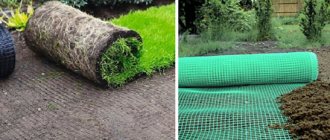In order to get rid of a mole infestation in your dacha, it is not at all necessary to immediately take drastic measures by purchasing mole traps or ultrasonic repellers. Sometimes a device such as a windmill is enough. It’s easy to make even with your own hands.
Do you know that moles in the country are also beneficial? They eat some harmful insects (for example, mole crickets and click beetles) and their larvae, loosen the ground, thereby saturating it with oxygen. But the harm caused by these creatures in summer cottages is visible to the naked eye much more than the benefits of their actions. If this is a fundamental issue for you, it’s time to get down to business seriously and make a windmill from a plastic bottle to repel moles.
Alternative methods of getting rid of moles
In addition to homemade devices for expelling pests, there are also industrial options.
For example, an ultrasonic repeller. The device looks like an ordinary stick with batteries inside. The device generates ultrasonic waves that are not perceived by the human auditory analyzer, but are annoying to pests. One of the most successful solutions will be the Tornado-OZV 02 repeller
In the photo, the ultrasonic repeller TORNADO OZV.02
The underground inhabitants begin to panic due to constant mechanical and ultrasonic vibrations.
- The sound source itself is located at a depth of 20 cm, which eliminates the noise effect above the ground.
- Soil is a denser medium, so sound waves propagate better in it and reach a radius of 2 km.
- The device is made of impact-resistant materials that are resistant to dust and moisture. The device operates for 3 months on one set of batteries.
- The price of the Tornado repeller is 1200 rubles.
Design features of rotating spinners
For a predator, this type of spinner is attractive not only for its visual characteristics, but also for the powerful flow of vibration waves created by the rotating working body of the accessory. The design features of rotating spinners are based on the circular rotational movements of a tin petal loosely strung on a metal rod through the pressure of the water column when guiding the product, carried out by winding the cord with a tackle reel. The resistance of the petal to the flow of water creates vibration waves that arouse the active interest of the predator, which, together with periodic glimpses of a moving spinner, provokes the fish to attack the object.
Means for exterminating moles
When it is not enough for you to scare away moles and you want to fight for destruction, use canonical means. Since the movement of animals in surface passages on loose soils can be noticeable, they are easy to pick up from the ground with a fork. You can install mole traps in pairs in horizontal permanent passages, at intersections of roads and trails. But in well-cultivated areas, this is ineffective, since moles move slowly on loose soil and, sensing foreign objects, easily bypass them. It’s another matter if the traps are in a meadow, on a road or path, near fences, where dense soil prevents the animals from making such maneuvers. That's when they are forced to climb through the trap and, as a result, fall into it.
Buckets and deep pans can be successfully used to catch moles. They are buried in the place of permanent passages so that the upper edges are at their level. The dug holes are covered with plywood so that the mole rats do not feel the breeze. Sometimes 3-4 animals can get into one bucket in a day.
Only a patient, long-term fight against moles, carried out simultaneously by you and your neighbors, can have a positive effect. But it is not recommended to use chemicals in the summer, when everyone is on the site. This is especially dangerous when there are small children and pets.
Harm and benefits of moles
Owners of areas where there are moles do not need to explain why they are harmful. Their mounds can be found in a wide variety of places: in plantings of potatoes, vegetables, flowers, and just on lawns. But for the sake of fairness, it should be noted that these animals also bring benefits:
- eat harmful insects, including wireworms;
- they loosen the soil, and some vegetable growers believe that in soil where there are moles, plant seeds germinate more easily, so they advise taking soil for seedlings in these places;
- Roots stretch along the mole passages and excess water drains during the spring melting of snow, and air enters the deep layers of the soil.
The mole is very voracious - it sleeps in the nest for 4-5 hours and, when hungry, “trots” for food. Earthworms, slugs, chafer larvae, wireworms, centipedes, mole crickets and other insects - everything will do. If little frogs, mice, voles, or lizards get into the moles' passages, they too are eaten. Sensing prey, the blind hunter immediately rushes towards it, paralyzes it, bites it from the head, and drags it into its feeding hole. Paralyzed animals do not deteriorate for a long time. This glutton eats about the same amount per day as he weighs, and stores reserves until the onset of severe frosts.
Moles and mole rats are very famous inhabitants of the underground kingdom. They look harmless, so many people don’t even realize how much harm they cause to garden crops. Meanwhile, gardeners declared real war on these animals. They try to drive out uninvited guests from their land in every possible way.
Some use cruel extreme measures: traps, poisoned food, and the like. More humane gardeners place solar-powered, ultrasonic or homemade mole repellers on their plots.
This article provides complete information about the dangers of moles and mole rats, and what humane and legal measures exist to combat them. And also about the types of repellers and instructions - how to make a mole repeller from a plastic bottle.
Manufacturing technology
The basis of the accessory is a wire frame, onto which a petal cut to shape and processed along the contour is strung and a load core. In the front part of the structure, the wire is twisted into a loop, which will subsequently serve as a place for attaching the bait to the cord. The core is made of bronze or brass by drilling a hole along the entire body for the wire frame. This part can be made composite, from several elements, which allows you to add a sound effect from the contact of parts of the core during wiring to the main characteristics of the attachment. The wire frame behind the core is also twisted into a loop, having previously inserted a winding ring into it to secure the tee. By manipulating the shape of the petal and the mass of the core, the spinner is given the required animation characteristics.
When to start fighting against moles and why?
Traces of a family of moles in a summer cottage cannot be ignored while waiting for the problem to be resolved without personal intervention. The more time the mammals have at their disposal, the more difficult it will be to deal with them in the future. A network of holes and tunnels will entangle the entire site and this will negatively affect not only the aesthetics of the site, but also the harvest.
You need to constantly “defend” the land, even when it seems that there are no more moles on it. Simple preventive measures will eliminate the possibility of pests returning to their previous place of residence if they remain in a neighboring area.
It must be remembered that moles are family animals that reproduce quite actively. That is why it is so difficult to get rid of them after a long period of residence on the site.
What means are used to combat earth destroyers and how effective are they? More on this below.
Shovel against pests - a simple way to control
The fight against moles in the garden does not always involve spending on newfangled products and traps. You can try to solve the problem with a simple shovel. The method is not the most humane and is suitable for those who intend not just to catch, but to take the life of each member of the family.
Moles cannot see, but have an excellent sense of smell and hearing, which compensate for the birth defect, so they are easy to frighten off.
This means that you need to use a shovel as carefully as possible, moving along the furrows of the dug tunnel. It is important to choose the time when moles go hunting for worms and insects. Usually this is morning, lunch and evening.
Moving along the furrows, you can notice that they are becoming longer, which means that the mole is in the area of study of the site and is busy working. At such a moment, maintaining composure, you need to block the mole’s path with shovels from both sides. In surprise, the animal will either hit their surface and die, or require additional human intervention (you can use a hammer to stun).
It is worth remembering that there are many moles, which will make catching them much more difficult.
Deterrents - how do they work?
When analyzing methods of fighting moles, one cannot ignore repellents. With proper selection and application, they allow you to solve the problem in a few days with minimal effort in at least half of the cases
Therefore, before moving on to more radical methods, it is worth trying to start with repellers.
As noted above, it is possible to scare away moles from the area using unpleasant odors and sounds. It is worth using both methods in combination.
As an option, it is worth considering sound repellers, made with your own hands from scrap materials:
- turntables;
- weather vanes;
- alarm clocks;
- bottles, etc.
Pinwheels are made from ordinary empty plastic bottles or cans. They are mounted on metal poles firmly fixed in the ground. When the wind blows, they begin to make loud sounds that enter the soil. Often moles are frightened by the turntables and leave the area. But it is impossible to say that a windmill for repelling moles is a one hundred percent effective remedy, because it does not always act as its manufacturers would like.
Weather vanes have a more complex design, which operate on the principle of turntables or, as an option, reed stalks that make a sound in the wind.
An interesting option is Chinese battery-powered alarm clocks. They are placed in ordinary glass jars, after which the device is buried in the ground in the expected habitat of the moles. You need to bury several jars with alarm clocks, with each one set at a different time, forcing them to go off one after another with minimal pauses.
Alternatively, you can use empty plastic bottles. They are simply laid out around the site in large quantities. Nighttime temperature changes cause the air to expand and contract, causing the plastic to crack, again irritating and frightening to animals.
The method of repelling moles using glass bottles is more than simple. They are buried in the ground at an angle of 45 degrees, leaving only the neck outside. Blowing into it, the wind will cause a sound to be produced that scares away moles.
All of the above means are installed near the expected mole habitat, focusing on the tunnels. The more repellers are used, the more likely it is that control methods will produce positive results.
Types of repellent devices
All repellers, even homemade ones, are divided into 4 types:
- Mechanical. They are effective because their parts, when moving, create noise and vibration that scare away the animal;
- Biological - capsules containing aromatic oils. Pests cannot tolerate their smell. This group also includes plants whose smell cannot be tolerated by moles;
- Electronic mole repellers. They are usually vibrating, powered or battery operated;
- Ultrasonic. They repel small pests by emitting frequency sound waves. When they hit the ground, such sounds send a signal of danger to the animal’s brain.
Although the modern market offers a huge number of mole repellent devices to choose from, homemade devices also enjoy considerable success. If you use homemade repellers in a comprehensive manner in the fight against pests, then the land area can be completely cleared of annoying animals.
Watch the video! DIY mole repeller
How to make a mole repeller from a plastic bottle
A plastic bottle is an indispensable universal item used to create various devices in the garden. It can be used to make an excellent weapon against moles, the so-called windmill.
Method No. 1
To make a windmill from a plastic bottle
necessary:
- large scissors;
- plastic container 1.5 l;
- permanent marker;
- awl;
- stationery knife;
- self-tapping screw;
- metal plates with a hole in the middle (washers);
- strong stalk.
The manufacturing process itself consists of the following steps:
- Use a permanent marker to make a mark on the bottom of the plastic bottle. Draw a strip just above the bottom along the lower border;
- Using a stationery knife, cut off the figured bottom of the bottle along the drawn strip;
- In order for the spinner to rotate in a clockwise direction, you must correctly mark the bottom of the bottle. First, draw a line with a marker and draw it from the center of the bottom of the bottle to the center of any of the convex irregularities. Next, draw a line that goes from the center of the bottom and ends in the concave part. And thus we place markings along the entire bottom.
- Use large sharp scissors to cut out unnecessary elements. The result is a device in the form of a propeller. We cut out the first element and then cut through one after another.
- 5 such parts should be removed;
- In the resulting bottom, we pierce a hole in the center with an awl heated on the fire.
- We put a washer on the prepared self-tapping screw and insert it from the inside of the propeller. Then we put three more washers on it;
- Take the remaining element from the bottle. Use a heated awl to make a hole in the lid and screw a self-tapping screw into it. In this way, the propeller is attached to the plastic bottle. There is no need to screw in the screw all the way. The plates must rotate freely;
- Attach the turntable
to the support. - Two holes are made in the neck and a small nail is inserted into them, which is then hammered into the handle.
The principle of operation of such a windmill is simple: gusts of wind, hitting the propeller, begin to spin it, and the largest element of the turntable
It also rotates around the nail. The washers create noise, which scares away small pests.
Method No. 2
This method requires fewer items to be used. You will need a stick, garden shears and a bottle:
- We make wide cuts in the walls of the plastic bottle from top to bottom;
- From these holes we make two more smaller ones perpendicular to the main one. One above, the other below;
- We bend the resulting elements to the sides, you should get blades;
- We put the resulting mechanism on the support after making a hole in the bottom of the bottle.
The wind rotates the blades, creating noise that scares away moles. Such devices are usually placed near an animal's burrow.
Method No. 3
To build a structure for repelling moles, you will need elements from the second method, as well as a plate cut from the wide part of another bottle:
- In a plastic bottle we will make slits 15 cm long;
- From the additional part it is necessary to cut the blades for the propeller of approximately the same length;
- The blades must be inserted into the holes to form a propeller;
- You need to make several holes in the lid and insert metal rods into them. Then attach the device to the stick.
When rotating, a rustling sound is produced, accompanied by vibration. Hearing it, the mammal gets scared and feels discomfort, so it moves to another habitat.
Method No. 4
You need to stick sticks along the perimeter of the land, placing several supports in one place. beer cans on them.
.
When there is a gust of wind, the plastic or metal will bang against each other, creating noise that prevents the approach of a harmful mammal.
Method No. 5
This is the so-called electronic mole repeller
. It is made from a hollow metal pipe. The scheme is like this:
- The pipe is dug into the ground and an inexpensive electronic beeping part from a battery-powered alarm clock is placed inside;
- At the top, the pipe is covered with cloth to prevent noise from reverberating throughout the surrounding area, and with a cut-off bottle to protect the structure from rain.
How to catch a mole in a jar?
There is another method that has been tested many times in practice to catch a mole: in a jar, pan, bucket or plastic bottle with the top cut off. This kind of mole trap can also be easily done with your own hands - for this you will need to make a kind of trap pit.
Let's look at the manufacturing procedure for this mole trap:
You can take a large five-liter plastic drinking water bottle; you need to cut off the tapered top. Some gardeners successfully use three-liter glass jars - their width is quite sufficient for a mole to be caught in them (the animal is comparable in size to a rat)
You can also use a suitable size pan or bucket; it is only important that the height of the trap is at least 25-30 cm, otherwise there is a chance that the mole will get out of it; Then the mole's passage is excavated and a hole is dug, identical in diameter and height to the trap; A prepared mole trap (container) is inserted into the hole; After this, the cracks along the edges of the trap are filled with earth, the earth here is compacted a little. As a result, the edges of the container should be hidden with a compacted earthen roller so that the mole does not feel them; The top of the trap is covered with a wooden shield or thick fabric so that light does not penetrate into the trap and does not scare away the animal.
Such a mole trap, installed in a gap in the underground passage of the mole, works even simpler than the one described above from two plastic bottles. The animal simply falls into the jar (or other deep container), moving along its course.
You also need to check the trap at least twice a day so as not to starve the caught animal.
Repeller efficiency
The mole is a blind animal. He sees nothing in the light that cannot be said about the darkness. Therefore, the mole’s hearing and sense of smell are very well developed. All homemade repellers are based on the formation of some kind of mechanical action and ultrasound.
- Extraneous sounds: rustling, rustling, creaking, knocking, whistling, rumble;
- Vibration, movement.
When a plastic object spins in the wind, it sends vibrations down the stick into the ground. When crawling to the location of the repeller, the animals sense these vibrations of the ground, as well as unpleasant sounds, and remove themselves.
Conclusion
It must be remembered that moles live in families, which consist of several adults and younger ones. Many families can unite. The animals dig holes and passages several meters deep.
Moreover, each underground path has several exits, which makes it difficult to determine the main location of the family.
All of the repellers we have listed have been tested repeatedly by users and are also low-cost and troublesome, so buying a modern mole repeller is not a bad thing, but complement its availability at the dacha with a homemade “brother” made from a plastic bottle.
Hills of earth and sand that form in a garden plot in areas where moles move are called molehills. In general, they are not dangerous, just like the moles themselves, which feed exclusively on insects and not on the roots, buds or fruits of crops. However, the appearance of a molehill area is significantly spoiled, which means that advice on how to get rid of moles in a garden plot will not lose relevance in the next few years, until a universal remedy has yet been invented that will solve the problem in one fell swoop and forever.
Advantages of using a turntable
During the hunt, the animal is capable of digging up an area even in a short period of time. A bottle spinner for repelling moles will scare them away and protect existing crops.
Interesting! From experience, some summer residents know that underground inhabitants cannot tolerate various noises.
For example, this could be the sounds of an alarm clock, knocking on metal, or plastic crackling. Since the goal is not to destroy the guests, the trap will solve the problem in a humane way.
Option 1. Simple weather vane
This product can be placed in the garden or local area just for decoration. However, it is also useful for schoolchildren, who are asked to keep a “weather diary” and determine the prevailing wind direction every day.
To make it, you will need a stick as a support, and a small piece of thick wire on which you will need to place the weather vane. The simplest option is to pierce a bottle with wire, bend a loop at the top, add a large plastic bead at the bottom, and fix the resulting structure in the center of the stick. Before installing the wire, you can paint the bottle in bright colors using acrylic paint. A cheaper option is to use multi-colored electrical tape, which you always have on hand at home.
Tools and materials
The device is made from simple and affordable materials. The design can have different sizes. A windmill for a vegetable garden is created using:
- two 1.5 liter plastic bottles (use plastic of different colors or pre-paint it with acrylic paints from spray cans);
- durable scissors;
- sewed;
- pliers;
- stationery or construction knife;
- strong but easily bendable metal wire;
- four multi-colored plastic bottle caps;
- large beads.
Decide in advance on the size of the mole repellent structure. Before making a large turntable, additionally acquire:
- a high wooden pole;
- round metal pin;
- a small wooden block;
- multi-colored or transparent plastic liter bottles - you will need 4 pieces;
- two washers.
Radical methods of struggle
If the methods listed above did not help, it’s time to radically change your actions. The moles must sense whose land it is. We must continue the fight with the help of:
- ultrasonic device (bought at a garden center, runs on batteries within a radius of 15 meters);
- mechanical mouse traps;
- firecrackers (they are set on fire and thrown into passages);
- rags soaked in gasoline (placed in the center of the hummock and covered with earth);
- smoke screen (the newspaper is doused with machine oil, set on fire, and the mole is smoked out with smoke);
- granular mineral fertilizers (filled inside the hole, buried with earth);
- raw chicken egg (it will rot in the molehill and drive it out);
- a zinc-based preparation;
- chemical poisons from rodents;
- exhaust gas from a running car engine.
Mechanical methods of mole control have proven their effectiveness in practice. Along the entire perimeter of the site, a mesh is buried to a meter depth, gravel is poured, boards and old linoleum are laid (whatever is found in the house). This will create a barrier. Will not allow the digger into the territory.
To protect the lawn from unwanted visitors, lay out a plastic mesh over the entire surface of the area allocated for it. The top is covered with drainage and soil. Even if a mole climbs into the area, it will not be able to lift a mountain of earth onto the grass - the net located below will interfere.
Mechanical methods will not drive away the underground guest, but they will not spoil the appearance of the landscape design.
Eternal exile: blockade the moles
In addition to temporary methods of fighting moles, there are also more reliable ones, after which the animal will never be able to visit you at all. But this is not a one-day job. The main point of the fight is to place a blockade along the entire perimeter of the site, through which the mole will not penetrate. And since the animal rarely burrows more than a meter deep into the ground, it is precisely this depth that needs to be dug with a trench. It's a long time. But also effective! The finished trench is filled with slate sheets, metal mesh, stones and other hard material that the animal cannot break through. This layer should reach the very surface of the earth and be only slightly covered with soil. It is especially convenient to create such a barrier at the time of installing the fence. For example, for concrete fences the foundation is poured, although not to this depth. But you can dig even deeper and protect yourself from uninvited guests!
It should be remembered that not every mole in the garden will end in your victory. There are animals that are not afraid of either strong smells or noise. And then you will have to catch them with mole traps, and build an underground blockade for the “aliens.”
Option 2. Pinwheel
A wonderful children's toy that can serve as a decoration for the local area. It is cut from one plastic bottle, from which the bottom is first cut off, and then the entire side surface is cut into 3-7 strips. This is how the turntable blades are made. They must be folded perpendicular to the neck and processed over a candle flame to melt the sharp cuts. Slightly softened plastic can be easily turned at an angle of 45 degrees or the surface slightly bent to form fan blades. A hole is made in the lid with a nail, then it is necessary to enlarge it slightly, but so that the diameter of the hole does not exceed the size of the nail head. After this, a stick is dug in, and a nail is nailed to it, onto which a large flat bead, a pinwheel, and another bead have previously been placed. Instead of beads, you can use stronger flat metal washers. In this case, the product will rotate well and will not fly off the nail.
You can improve this option and place several of these turntables on one long bolt. Then the sequence is as follows: a washer, a pinwheel, a washer, a nut fixed in the middle, then again a washer, a second pinwheel, a washer and a plug for the bolt.
Benefits of using homemade products
First of all, the main advantage of homemade repellers over purchased ones is the cost. From practically waste, you can construct several “rattlers” and distribute them over the area of the site. Of course, it will take some effort to get the animals to leave the area, and you shouldn’t expect instant results either.
The closest in effectiveness to factory models are ultrasonic repellers assembled according to special circuits. Next in terms of efficiency are watches and receivers, and plastic bottles and cans complete the list.
Note! If you want to achieve instant results, it is better to pay attention to the model from the store.
DIY mole repellers
1. Glass bottles. Glass bottles are buried in the ground at about 2/3 of the depth (the wind is blowing or there are sounds in the bottles and the moles are afraid), 2 bottles for each bed. We tried it, but this method didn’t work well for us.
2. Beer cans. Pegs are dug along the perimeter and in the middle of the site, and metal beer cans are placed on them, bottom up. The wind causes the cans to hit the pegs and rattle, thereby scaring away the moles;
3. Alarm clock. Take a jar, put a small alarm clock in it, which is turned on, and bury the jar in the ground to the depth of the jar. When the alarm clock rings 2 times a day, the effect will not be long in coming. The result will be enhanced by using several such devices around the perimeter of the site;
4. Plastic bottle. It’s also easy to make a mole repeller from a plastic bottle with your own hands. According to many summer residents, homemade repellers really work. They construct a kind of turntable. Make 4 windows on the sides of the plastic bottle and cut them on three sides. The lid is screwed on and a hole is made in the bottom. A pinwheel is mounted on a metal tube (fittings). Moles do not like the hum and vibration transmitted into the ground from the turntables, and they leave the summer cottage. For more information on how to get rid of moles in your dacha using a homemade repeller, watch the video instructions:
The effectiveness of homemade scarecrows
Outwardly, moles look like cute and harmless animals.
But at the same time, they can cause significant harm to the garden plot. Moles by nature are blind animals. Thanks to this, their hearing is highly sensitive. Accurate determination of the permanent habitat can be difficult because the family has several exits from the burrow. Therefore, determining its location is not easy. The task is further complicated by the fact that the depth of the hole can reach several meters. As a result, the right solution is to make homemade turntables from available or scrap materials.
Moles, in addition to causing harm, can also be beneficial. They constantly need food of animal origin. The animals eat beetles, caterpillars and worms in large numbers. Therefore, when deciding on the need to fight, you need to correlate these two facts. In addition, during the digging process, moles loosen and mix the soil.
In addition to the methods described above, you can use simple alarm clocks. You will need a few pieces in total. Clock mechanisms are placed in glass jars and placed in pits. In the process of fighting, you will need to set alarms several times a day for different times. As a result, moles will quickly leave the territory due to the regular and shrill ringing.
To increase efficiency, you can take a medium-diameter polymer pipe and drill many holes. When the clock mechanism is triggered, the hum will spread along its entire length and in all directions. Intense ringing will quickly force ferrets to change their habitat.
Repellers
Taking advantage of the fact that moles are very sensitive to various sounds. A number of manufacturers currently produce electroacoustic devices. First of all, ultrasonic devices. They do not cause any harm to humans, but for moles they become a problem for daily existence on the site.
Among the advantages is the penetration of sounds and other vibrations everywhere, despite obstacles. Typically, such devices operate from autonomous power sources, so they can be placed anywhere in the garden.
Mole traps
In cases where there are really a lot of moles, or for some unknown reason it is not possible to get rid of them using simple methods, mole traps will help. These devices will allow you to catch females ready to breed in early spring.
To determine the location for the trap, you need to press down the mole's passage.
Installation in such areas ensures quick capture of the animal. The main passages are often located in straight directions along fences, fences and foundations. The meandering lines are temporary, so setting traps there will not be effective.
Mole traps consist of several elements:
- input ring;
- pressure lever;
- guard ledge;
- alertness itself;
- spring ring.
The frame is made of a piece of steel wire 3.5–4 mm thick. Between the support and pressure zones there is a spring in the form of a spiral of 2.5 turns. The spring should create a pressing action of 4–5 kg and reliably press the animal to the lower area of the entrance ring with a weight of 2–2.5 kg.
Operating principle:
- When preparing the device, the pressure clamp is raised in the upper direction;
- the design provides for the penetration of the mole to a sufficient depth before the mechanism is triggered;
- the animal touches the horn with its head and thereby releases the clamping device.
Over the course of one day, several animals move along the selected path. At the same time, other individuals bypass the captured animal, making a small undermining. Therefore, along the entire path, you can catch a large number of moles at one time.
The main reason for the invasion of animals into garden plots is the looseness and fertility of the soil. Due to this, the prevalence of pests is highest. Since they are a favorite food of moles, the latter's colonies can be quite impressive.
All of the above methods have been tested many times by experienced gardeners. The production of some of them does not require financial investment at all. But the result will exceed all expectations, and uninvited guests will quickly disappear from the occupied territory.
Gardens and vegetable gardens are a good help both in terms of food and in terms of relaxation for the soul. But everything that is grown on personal plots faces many dangers - beetles, larvae, birds, moles. And if chemicals help fight plant diseases or insect pests, then it is best to scare away birds and moles from the site, rather than destroy them. A primitive design will help with this - a windmill made from a plastic bottle, made with your own hands from scrap materials.
Tin repellers
Many summer residents, going to their dacha in the summer, stock up on beer in metal cans. After the beer is drunk, many summer residents throw them away, but in vain! After all, they can be used to make an effective mole repeller.
And again, you can start with the simplest option, when the beer can is simply put on the pin. The jar is light enough, so it begins to make sounds at the slightest wind. If you take a rope and sort of string the jars on it so that they touch each other, like a garland. This garland can be mounted on two pins made of wood or metal. The most difficult option is the spinner.
Products made from such scrap materials are light, simple, but effective.
In the photo below you can see a more complex design of the repeller.
Not everyone can install such a mechanism, although in fact it is not that complicated if you study it in more detail.
MOLE REPELLER!!!! WITH YOUR OWN HANDS FROM AVAILABLE MEANS!!!!
Watch this video on YouTube
Electrical circuit and operating principle
The rodent (mole) repeller is assembled according to the electrical circuit diagram below and consists of only two simple logic chips, a transistor and several passive elements located on a printed circuit board. A distinctive feature of the proposed circuit is low power consumption (a set of three AA finger elements with a capacity of 1 A*h is enough for the entire season), which is due to the emission of an audio signal with a frequency of about 480 Hz for two seconds with a frequency of once every 32 seconds. In addition, this mode of operation of the repeller has a more effective effect on moles and increases the time it takes rodents to get used to the sound.
Structurally, the circuit consists of a clock generator assembled on elements DD1.1 and DD1.2 generating a frequency of about 480 Hz, a frequency divider on the DD2 chip, a logical signal adder on DD1.3, a key transistor VT1 and an audio emitter BA1.
The frequency of the rodent repeller clock generator is determined by the values of resistance R1 and capacitor C1. By decreasing or increasing the value of R1 or C1, you can accordingly increase or decrease the frequency of the emitted sound signal.
From the generator, a rectangular sound signal without changing frequency, through logic element DD1.3 and current-limiting resistor R4, is supplied to transistor VT1, turned on in key mode. In silent mode, a voltage close to zero is applied to the base of the transistor and the transistor is closed. In this mode, the current consumption of the rodent repeller is 0.1 mA. In the sound signal emission mode, the current increases to 22 mA. A simple calculation shows that when using batteries with a capacity of 1 Ah, the mole repeller will work for 9000 hours or 375 days.
The signal from the clock generator is also sent to the counting input (pin 10) of the frequency divider DD2. Based on a positive signal drop at pin 9 of the counter, logical zero changes to logical one. In order to ensure the emission of an audio signal with a period of 32 seconds, a logical unit is supplied from pins 15, 1, 2 and 3 through diodes to the 12 pin of logic element DD1.3, locking it. As soon as a logical zero appears simultaneously at pins 15, 1, 2 and 3 of DD2, DD1.3 will pass a signal from the clock generator to the base of transistor VT1 and BA1 will begin to emit sound.
The chain C2 and R2 is used to set the output voltages of the DD2 chip to zero. When supply voltage is applied to the circuit, capacitor C2 begins to charge and a supply voltage appears at its lower terminal, which is supplied to pin R of the microcircuit. When the charging process is completed, the voltage at its lower terminal will drop to zero and will no longer affect the operation of the DD2 chip. Resistor R3 is a load for diodes VD1-VD4, so that there is somewhere for the current to flow and to eliminate interference in the absence of voltage at pin 12 of the DD1.3 microcircuit. C3 serves to suppress interference that occurs during transient processes in microcircuits.
Why are moles and mole rats dangerous?
According to the biological classification, the mole belongs to the order of insectivorous rodents. Spending a significant part of its life under the surface of the earth, in search of food it digs channels and passages, damaging the roots of plants, digging them up to the surface of the earth. Its food is insects, including those that are beneficial to plants and humans, such as bees. In addition, the mole’s favorite delicacies include earthworms, whose role in soil quality is difficult to overestimate. Moving under the surface of the earth, worms loosen and structure the soil, eliminate pathogenic microorganisms and form a fertile layer of humus.
Moles, being underground, have very poor eyesight, however, this deficiency is compensated by well-developed organs of hearing and touch. It is on the impact on these animal senses that humane methods of pest control are based. In addition to them, there are known methods for installing trap jars at the depth of the animal’s habitat, which reaches several meters, mechanical traps and etching with chemicals. Moles dig tunnels that are long and have several exits to the surface, which makes it difficult to catch this nimble animal. In addition, these individuals often live in colonies of several generations of different sex and age groups.
Mole rats resemble rats in appearance and behavior; their difference from moles is that these animals feed on plants and their fruits, sometimes destroying entire beds of crops and plants with ripened fruits.
Additional tips and tricks
- The key to the success of homemade models is their number - the more repellers you place on the site, the sooner the moles will leave it. It would be useful to combine different types and types of homemade “scarecrows”;
- Most repellers are quite noisy. Decide in advance whether you can tolerate constant noise and crackling on the site. If the answer is no, pay attention to ultrasonic devices;
- If moles have been settling on your site for several years, you should worry about protection in advance - in April-early May you can already install several “rattlers”. Mammals will most likely avoid the unpleasant territory without having time to settle underground.
Moles are cute underground inhabitants (All about moles - description, habitat, types and features, read more in the article here), which actually do not harm crops and soil fertility, however, they still need to be gotten rid of. First of all, you should decide for yourself whether you want to spend money on factory devices or install the mechanisms yourself, sacrificing the appearance of the site.
We catch moles and remove them from the site
You can catch moles using either homemade traps or commercially available devices.
A “pipe” type trap is most often used as a mole trap, which is installed during the animal’s move: the mole crawls into it, pushing the door forward (the door only opens inward), after which the animal can no longer get out.
The photo below shows an example of an industrially produced mole trap-pipe:
And here is a photo of a homemade mole trap-pipe:
You can also make such mole traps with your own hands from ordinary plastic bottles or sections of plastic water pipes. Although it will be easier for someone to buy a ready-made product - the price of such traps in stores is approximately 600-1200 rubles.
Another way to catch a mole is to dig a bucket, pan or plastic bottle into the ground under its passage, into which the animal will fall when it passes through its tunnel.
It is advisable to check such traps every 5-6 hours. After catching the animal, you need to take it 1-1.5 km from the site and release it in the grass or bushes - this way you can get rid of the mole forever, since it will not be able to overcome such a distance and will not come back.
Here are some more popular and fairly simple ways to catch a mole in the country:
- Just dig it out with a shovel while moving near the surface. At this time, the ground rises a little, the animal is visible, and if you quickly stick a shovel behind it and throw out the lump, the mole will appear on the surface of the earth. The method is complex, it requires strength, speed and, most importantly, time to wait for the animal;
- Sometimes they get rid of moles using traps that kill the animal. These devices are as effective as live traps, but their use is inhumane. If the animal can be caught alive and taken out of the summer cottage without killing it, then it is better to prefer the humane option;
- Installation of fishing lines with fishing hooks in mole passages. Some even recommend hooking earthworms. This is a rather brutal method of catching moles, and it can hardly be recommended for use.
In some cases, with proper use of traps, it is possible to get rid of moles in a summer cottage in just 1-2 weeks. However, we note once again that the use of traps does not cancel the use of repellents, since only in this case the risk of new moles coming to the site will be minimal (in general, using repellers to drive away a mole living in its “native” territory can be more difficult than repelling the animals , coming from outside and only looking closely at potential hunting grounds).
general information
A large number of moles appear in gardens in the first half of summer. This occurs due to the fact that the upper soil layer of forests and meadows becomes scarce and depleted. And garden associations and summer cottages with their fed “fat” soil, teeming with all kinds of living creatures, attract moles like a magnet.
During a short hunt for its food, a mole can dig up the entire area up and down, while spoiling a vegetable garden, beds with crops or a beautiful lawn. To prevent this from happening, you need to know how to get rid of an uninvited guest. If you do everything consistently, the result will be definitely positive and the mole will leave the area where he is not welcome.
There is an opinion that moles are afraid of unpleasant odors. As a result, some summer residents water their gardens with carbide and kerosene, scatter rotten fish around the area and use smoke bombs. However, such methods are unlikely to suit good gardeners - is it possible to have a good rest in a plot that constantly stinks of rotten meat and kerosene?! Therefore, people are looking for alternative ways to fight.
Attention!
Industrial enterprises have developed and produce various types of electronic repellers. But the price for them is quite high.
Experienced summer residents know that moles cannot stand any kind of noise. They do not like the sound of metal, the crack of plastic, or the ticking of an alarm clock. It was these characteristics of the animal’s character that served as the theoretical basis for the creation of various types of mole repellers.
How to make a pinwheel from beer cans?
The design includes a metal pipe and an empty cola or beer can. The top of the can is cut out to fit onto the pipe. The same 3 cuts are made on the jar. For greater noise, it is better to bend the bottom of the can. The choir performed by several noisemakers, the mole will not be able to stand it and will leave his favorite places.
Of course, making a repeller from a plastic bottle is as easy as shelling pears, but not everyone has such a desire. And there can be problems with the wind. In calm, windless weather, they will become a simple decoration of the garden plot. And the resonating noise in gusty winds may not please both the craftsmen themselves and their neighbors.
Tee additional bait
Rotating spinners are equipped with a tee corresponding in size to the dimensions of the spinner. There is a reason to add elements to the tee that will increase the attractiveness of the bait.
Important! The main thing in this improvement is not to overload the accessory, which can interfere with the quality of quick activation of the spinner petal.
The threesome can be equipped with small silicone molds in the form of a twister or a worm. A synthetic bright red thread, tied in a bunch that covers the point of the hooks, performs well. Some craftsmen knit the likeness of a fly or other insect with lush plumage onto the forend of a hook, including a natural feather and a thin metallic golden or silver thread.
Important! Hooks covered from the forearm to the sting with a panicle of thin wires can not only additionally attract the attention of a predator, but also make a spinner in the form of a non-snag, which is convenient for use in overgrown reservoirs.
Types of ready-made mole traps
In the gardening store you can find a wide variety of ready-made traps, such as: live traps, scissor traps, plunger traps, tunnel traps, ultrasonic repellers and others.
Scissor trap
Simple and easy to use, easy to install, quickly adjustable. However, it is ineffective for rocky, frozen or wet soil. The trap is practically not applicable for holes that are too shallow or too deep.
Plunger trap
You can often hear complaints from summer residents that small mounds appeared in the garden or garden, then some plants began to wither, some of them died. Some even say that when they dug up the damaged plant, they saw a mole eating the roots. How to destroy these pests?
Well, moles cannot eat roots: they do not accept vegetarianism and do not eat plants. However, when building their numerous tunnels, the roots of various plants are inevitably undermined, and, bare, they hang in mole corridors, where they become prey for mice and voles. And due to drying out and damage to the roots, plants often die.
Comparison of homemade and industrial repellers
Of the industrial mole repellers, ultrasonic ones are the most popular. But according to reviews, not all of them are effective. They speak negatively about Russian-made ultrasonic mole repellers and praise Japanese ones.
According to homemade repellers, they note that moles have little fear of windmills and turntables, sometimes making a hole right next to the pin. Ringing alarm clocks or constantly playing modern music to the animals will effectively get rid of moles from the area.
Means for exterminating moles
When it is not enough for you to scare away moles and you want to fight for destruction, use canonical means. Since the movement of animals in surface passages on loose soils can be noticeable, they are easy to pick up from the ground with a fork. You can install mole traps in pairs in horizontal permanent passages, at intersections of roads and trails. But in well-cultivated areas, this is ineffective, since moles move slowly on loose soil and, sensing foreign objects, easily bypass them. It’s another matter if the traps are in a meadow, on a road or path, near fences, where dense soil prevents the animals from making such maneuvers. That's when they are forced to climb through the trap and, as a result, fall into it.
Buckets and deep pans can be successfully used to catch moles. They are buried in the place of permanent passages so that the upper edges are at their level. The dug holes are covered with plywood so that the mole rats do not feel the breeze. Sometimes 3-4 animals can get into one bucket in a day.
Only a patient, long-term fight against moles, carried out simultaneously by you and your neighbors, can have a positive effect. But it is not recommended to use chemicals in the summer, when everyone is on the site. This is especially dangerous when there are small children and pets.
Harm and benefits of moles
Owners of areas where there are moles do not need to explain why they are harmful. Their mounds can be found in a wide variety of places: in plantings of potatoes, vegetables, flowers, and just on lawns. But for the sake of fairness, it should be noted that these animals also bring benefits:
- eat harmful insects, including wireworms;
- they loosen the soil, and some vegetable growers believe that in soil where there are moles, plant seeds germinate more easily, so they advise taking soil for seedlings in these places;
- Roots stretch along the mole passages and excess water drains during the spring melting of snow, and air enters the deep layers of the soil.
The mole is very voracious - it sleeps in the nest for 4-5 hours and, when hungry, “trots” for food. Earthworms, slugs, chafer larvae, wireworms, centipedes, mole crickets and other insects - everything will do. If little frogs, mice, voles, or lizards get into the moles' passages, they too are eaten. Sensing prey, the blind hunter immediately rushes towards it, paralyzes it, bites it from the head, and drags it into its feeding hole. Paralyzed animals do not deteriorate for a long time. This glutton eats about the same amount per day as he weighs, and stores reserves until the onset of severe frosts.
Design test
After the angler has successfully managed to make a spinner of the desired shape and size, it is worth starting to debug its performance by adjusting the parameters when fishing at different speeds, directly in the conditions of the reservoir. Initially, they check whether the size of the petal in relation to the rod of the product allows it to start working when the spinner is lifted from the bottom. To do this, the product is placed on the bottom and the bait is pulled in with a sharp tug using the tip of the rod. In this case, the petal should begin to rotate, becoming at an angle of no more than 45 degrees to the core. When reeling, the angler should feel a distinct and even vibration from the movement. In case of failures, the work is adjusted by changing the geometry of the petal, bending its edges, pressing or straightening the bulges until the optimal cocking rhythm is achieved.
Having adjusted the detonation, they begin to check the aerodynamics of the spinner, casting at a distance, if necessary, additionally immersing the core and petal with soldering or making it easier by filing and grinding. Test casts are accompanied by reeling at different reeling speeds, selecting speeds at which the vibrations are most distinct and there are few malfunctions in the operation of the product. After adjusting the performance characteristics, the final painting of the turntable begins, and then the first catch can be carried out.
Electronics against moles - modern methods
Whether folk remedies are good or not in the fight against moles can only be judged after testing them in practice. If the result is negative, you should resort to more modern methods - using electronic repellers.
If we compare a windmill against moles, assembled with our own hands, with a repeller, which generates not only sound, but also vibration with a certain periodicity, frequency and duration, then the advantage of the second option becomes obvious.
The design of such devices most often consists of a column buried in the soil (many mistakenly call it an ultrasonic repeller, despite the fact that there is no talk of extracting ultrasound), generating signals in a certain frequency range. In the case of moles, this is a sound with a frequency in the range of 300-400 Hz.
In conclusion, it is worth noting that fighting moles with folk remedies is the simplest, but not always effective method. Therefore, if experiments do not produce results, it is worth trying modern devices of proven quality.
These should not be cheap Chinese solar-powered repellers that operate unstable or cheap analogs of high-quality devices that fail after the first rain. Devices should be selected from trusted manufacturers at an adequate price. The costs will be justified in the first days after their use, which means that savings are inappropriate here.
An unprecedented incident occurred in a favorite area: black bumps appeared in different places. This means that a mole has chosen him. Share with him what was acquired through backbreaking labor? Never! Nothing personal against living fauna! It’s just a shame for my efforts. First, we will offer to politely leave the uninvited guest using available devices. If it doesn’t help, radical measures will be used.
Repellers that affect pests using vibration
Such devices are based on the principle of influencing animals using low-frequency vibrations, which are perfectly captured by the animals and cause them a feeling of discomfort. Its use in open areas is more effective than the use of ultrasonic devices, since the soil is a much better conductor of vibrations than ultrasonic waves.
The devices are equipped with an electronic timer that changes the vibration pattern, which prevents animals from becoming accustomed to a specific type of vibration effect. As a result, after 7–14 days the moles leave the inhospitable and uncomfortable area for their life.
Moscow
By courier within the Moscow Ring Road
When ordering before 13:00 - delivery on the same day, after 13:00 - the next day.
The cost within the Moscow Ring Road is 350 rubles.
Pickup from the store - free
Moscow, Novopeschanaya str. 13 bldg. 3 (before visiting the store, check availability by phone)
Opening hours: Mon-Fri: from 10 to 20, Sat-Sun: from 11 to 18
Pickup points
Delivery time to the point of issue: 2-3 business days. day
Pickup cost: 200 rub.
Payment: cash or bank card
Delivery to the region
Delivery to the region -
350 rub + 30 rub. 1 km from the Moscow Ring Road
Waste material goes to work
Many, many different useful crafts can be made from so-called waste material. It’s also easy to get useful things for your garden plot and vegetable garden by applying your imagination and skillful hands to seemingly unnecessary things. Many different options for bird and mole repellers can be seen in various sources, some of them are quite complex, and some are primitive. It’s worth starting to create with the simplest designs. Plastic bottles, scraps of polyethylene pipes, a broken handle from a house mop, a used welding electrode, gift ribbons from already unwrapped gifts, toy bells or drink cans - anything can be used.
Beautiful wooden weather vane in the shape of an airplane
Making such a weather vane requires the skills of a carpenter, but it also looks beautiful, and at the same time these skills can be acquired.
Among the relatively complex tools, in addition to a jigsaw, drill, screwdriver and grinder, you will need:
- vice and
- electric planer (you may be able to do without it).
As in the previous version, the propeller is first made; this propeller looks much better than in the first version, but more skills and tools are required.
The propeller blades are made in this case from plywood. The fuselage is made from blocks, sawed out with a jigsaw, and trimmed with an electric planer. All assembly and manufacturing details are described in the video.
The same video (at the end) shows an interesting version of a weather vane with moving figures. But for some reason the author made figures in which a woman is chopping wood, and a man is sitting and drinking... It’s not pretty, but you can understand the principle.
I recommend: How and where is marble used?
What you need for work
The advantage of a plastic bottle repeller is that you will need a minimum set of tools and materials. Anyone can work with them, and purchasing them is not a problem at all. You can see this for yourself. Here's a list of everything you'll need:
- plastic bottle;
- steel rod or wooden stick;
- stationery knife or scissors;
- drill with a drill (in some cases this is not required).
That's the whole set. Are you surprised? It’s not worth it, because for all its simplicity, the mechanism works flawlessly. You just need to connect it all into one device.
Note! The device is automatic, but only works from the wind. In calm, windless weather it will simply be useless.











